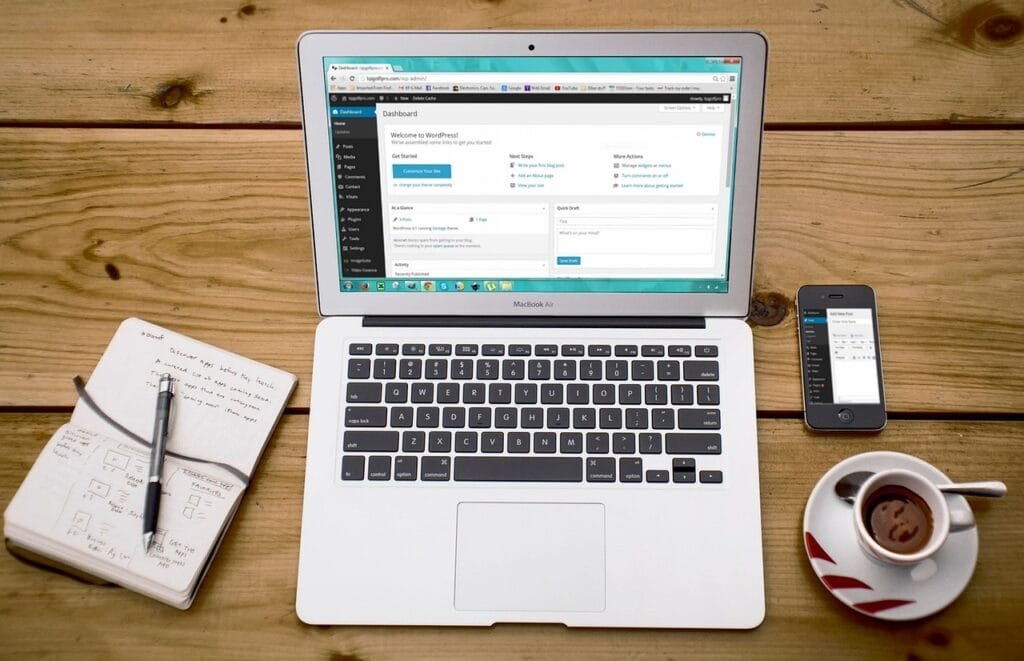This Article has been revised, edited and added to, by Poulomi Chakraborty.
- Understanding Mobile Dominance in Consumer Behavior
- Implementing Mobile Optimization in Influencer Marketing Campaigns
- Optimize Website and Landing Page Speed
- Enhance User Experience (UX) on Mobile
- Utilize Mobile-Specific Features for Engagement
- Continuous Monitoring and Optimization
- Crafting a Mobile-First Content Strategy
- Streamlining Mobile Transactions
- Leveraging Location-Based Marketing
- Analyzing and Adapting Based on Mobile Metrics
- Building Mobile-Centric Partnerships
- Tailoring Content Specifically for Mobile Audiences
- Create Mobile-First Content
- Utilize Influencer Content Beyond Social Media
- Harness the Power of Social Proof
- Focus on Accessibility
- Emphasizing Visual Storytelling
- Creating Content for "Micro-Moments"
- Personalizing Mobile Interactions
- Utilizing Mobile-First Social Media Features
- Ensuring Seamless Mobile Experiences
- Advanced Mobile Marketing Strategies for Enhancing Engagement and Conversion
- Tools and Technologies to Enhance Mobile Marketing Strategies
- Campaign Objective
- Conclusion
In today’s digital landscape, mobile optimization isn’t just a nice-to-have; it’s a pivotal element in the toolkit of successful influencer marketing. This article dives deep into how enhancing mobile user experiences can dramatically improve the effectiveness of your influencer campaigns. We’ll explore practical steps, compare strategies, and understand the profound impact mobile-first thinking has on engaging audiences.
Understanding Mobile Dominance in Consumer Behavior
We live in an era where smartphones are more than just communication devices; they are central hubs of our daily lives. The average person spends about three hours and 15 minutes on their phone every day, with 90% of that time spent using apps and browsing the internet. This mobile-centric lifestyle has reshaped how brands approach marketing, especially when it comes to leveraging influencers.
Imagine two scenarios in the world of influencer marketing: one where mobile optimization is treated as an afterthought, and another where it’s the backbone of strategy execution.
In the first scenario, an influencer shares a visually appealing post on Instagram about a new skincare product. The post receives a high number of likes and comments. Users are intrigued and want to learn more, so they click the link in the influencer’s bio.
But here’s the snag: the linked page is slow to load, doesn’t display correctly on mobile devices, and navigating through the details becomes frustrating. This leads to potential customers dropping off, thus squandering the initial interest generated by the influencer’s post.
In the second scenario, the same post is shared, but this time the linked page is fully optimized for mobile. It loads quickly, the layout is clean, and the navigation is intuitive.
Users easily find the information they need and can make a purchase with just a few taps. The result? Higher engagement rates, better conversion, and a superior overall user experience that not only reflects well on the influencer but also on the brand.
The comparison between these two scenarios highlights the critical role mobile optimization plays in the success of influencer marketing campaigns. By ensuring that every digital touchpoint is tailored for mobile users, brands can significantly enhance the impact of their influencer collaborations.
This isn’t just about making websites mobile-friendly; it’s about creating a seamless, engaging, and effortless path from influencer content to consumer action.
Why Mobile Optimization Matters More Than Ever
The shift towards mobile-first internet access is not just a trend but a paradigm shift. Google’s mobile-first indexing backs this up, prioritizing mobile-optimized sites in its search results. This means that your influencer-driven content and associated pages need to be optimized for mobile to ensure better visibility and higher search rankings.
Moreover, social media platforms, where most influencer marketing takes place, are predominantly accessed via mobile devices. Instagram, TikTok, and Snapchat, platforms known for their massive influencer presence, report that a vast majority of their access comes through mobile.
This underscores the importance of mobile optimization to ensure that the content created by influencers is as impactful as possible.
Implementing Mobile Optimization in Influencer Marketing Campaigns
To harness the full potential of mobile optimization in influencer marketing, it’s essential to adopt a detailed, step-by-step approach. Let’s break down actionable strategies that can help brands and influencers achieve this goal effectively.
Optimize Website and Landing Page Speed
One of the first aspects to consider is the speed of your website and landing pages. Mobile users expect quick load times, and even a few seconds of delay can lead to increased bounce rates. Here’s how you can improve this:
- Compress Images and Videos: Since visual content is critical in influencer marketing, ensure that all images and videos are compressed to reduce load times without sacrificing quality.
- Use Responsive Design: Employ responsive web design to ensure that your content looks great and functions well on all devices. This not only improves user experience but also aids in SEO.
- Minimize Code: Streamline HTML, CSS, and JavaScript to enhance performance. Tools like Google’s PageSpeed Insights can provide specific suggestions for improvement.
Enhance User Experience (UX) on Mobile
After speed, the next critical factor is the overall user experience on mobile devices. This involves more than just visual appeal; it encompasses the ease with which users can navigate and interact with your content.
- Simplify Navigation: Keep mobile navigation simple and intuitive. Large, easy-to-tap buttons and a clear path to essential actions (like purchasing or subscribing) help minimize user frustration.
- Prioritize Content: Since screen real estate is limited on mobile devices, prioritize key information and calls to action at the top of your pages.
- Touch-Friendly Interfaces: Ensure that all interactive elements are touch-friendly, with adequate space to prevent accidental taps.
Utilize Mobile-Specific Features for Engagement
Mobile devices offer unique features that can enhance influencer marketing strategies, such as push notifications and location-based services. Integrating these features can significantly boost engagement:
- Leverage Push Notifications: Use push notifications to alert users about new influencer content or promotions, directly driving traffic to your optimized pages.
- Incorporate Geotargeting: Tailor content and promotions based on the user’s location. This can make offers more relevant and increase the likelihood of conversion.
Continuous Monitoring and Optimization
Finally, the process of mobile optimization is never truly complete without a commitment to ongoing analysis and refinement:
- Gather User Feedback: Regularly collect and analyze user feedback specifically from mobile users to identify areas for improvement.
- Monitor Mobile Analytics: Use tools like Google Analytics to track how mobile users interact with your pages and where you might be losing them.
Crafting a Mobile-First Content Strategy
When considering content creation, founders should prioritize the mobile format from the outset. This means that all visual and textual content should be designed with the smaller, vertical screens of smartphones in mind. Videos should be short, as mobile users often consume content on-the-go, and attention spans are shorter.
Additionally, integrating interactive elements directly within the influencer content can increase engagement rates. For example, incorporating features like augmented reality try-ons directly in an influencer’s post about a new clothing line can drive direct interaction and lead to higher conversion rates.
Streamlining Mobile Transactions
A critical step in optimizing for mobile is to streamline the path from content to transaction. It’s essential for startup founders to ensure that the purchasing process is as frictionless as possible.
This means reducing the number of steps to complete a purchase, optimizing page load speeds, and using simplified payment systems that mobile users frequently utilize, such as Apple Pay or Google Wallet. Making sure that these elements are in place can significantly increase the chances of converting a viewer into a customer.
Leveraging Location-Based Marketing
Another strategy involves the use of location-based marketing to deliver content and offers that are tailored to the user’s geographical location. By partnering with influencers who have a strong presence in target regions, startups can craft campaigns that resonate more deeply on a local level.
For instance, an influencer could visit local landmarks while wearing or using the product, accompanied by geotagged posts. This not only enhances relevance but also increases the likelihood of local audiences engaging with the content and the brand.
Analyzing and Adapting Based on Mobile Metrics
Monitoring the performance of mobile-optimized campaigns is crucial. By analyzing metrics such as click-through rates, time spent on the site, and conversion rates from mobile devices, founders can gain insights into user behavior and preferences.
These metrics should inform ongoing adjustments to the campaign, ensuring that the content, user interface, and user experience are continuously refined to meet the needs of the audience.
Building Mobile-Centric Partnerships
Finally, selecting influencers who are not only popular but also have a track record of creating successful mobile-first content can amplify the results of your campaigns.
These influencers typically understand how to produce content that performs well on mobile devices and can advise on best practices for engagement and conversion within their audience segments.
Forming long-term partnerships with these influencers can provide a steady stream of optimized content and lend credibility to the brand through consistent association.
By embracing these advanced strategies, startup founders can effectively leverage mobile optimization to enhance their influencer marketing campaigns, driving both engagement and sales in an increasingly mobile-centric world.
Tailoring Content Specifically for Mobile Audiences
In addition to technical optimization, the content itself must be crafted with the mobile user in mind. This means considering how content is consumed on mobile devices and adapting strategies to meet those conditions.
Create Mobile-First Content
Mobile-first content is designed to engage users who are on the go, often consuming content in quick bursts. Here’s how to make sure your influencer content fits this mold:
- Short, Engaging Formats: Opt for short-form videos, engaging images, and concise text. Platforms like Instagram and TikTok thrive on quick, impactful content that captures attention in seconds.
- Vertical Video: Since mobile users typically hold their phones vertically, create content in a vertical format. This makes it easier for users to watch videos without rotating their devices.
- Interactive Elements: Incorporate features like polls, swipe-ups, and interactive stories to increase engagement. These elements encourage active participation, which can boost retention and conversion rates.
Utilize Influencer Content Beyond Social Media
While social media is a primary venue for influencer marketing, extending the reach of influencer content to other mobile-optimized platforms can broaden its impact.
- Email Marketing: Integrate influencer content into mobile-optimized email campaigns. Ensure that emails are responsive and that media elements load quickly and display correctly on mobile devices.
- In-App Advertisements: Use influencer-created content as part of in-app advertisements in relevant mobile apps. This can help reach audiences in a contextually relevant setting, potentially increasing the effectiveness of the campaign.
Harness the Power of Social Proof
Social proof is a powerful motivator in consumer behavior, and influencers are a prime source of this. When users see content validated by someone they trust, particularly on a personal device like a smartphone, the impact can be profound.
- Testimonials and Reviews: Encourage influencers to share their genuine experiences and reviews in a mobile-friendly format. This can include short video testimonials or quick, authentic reviews posted to their social feeds.
- Real-Time Engagement: Utilize features like live streaming where influencers can interact with their audience in real time. This can significantly increase trust and engagement, driving more profound connections between the influencer, the content, and the audience.
Focus on Accessibility
Accessibility is crucial in ensuring that mobile content is inclusive and reaches as wide an audience as possible.
- Caption and Subtitle Videos: Always provide captions or subtitles for video content to cater to users who may be hearing impaired or those watching without sound in public spaces.
- Contrast and Colors: Ensure that text is readable and that there’s sufficient contrast between text and background colors, especially since mobile devices are often used in varying light conditions.
Emphasizing Visual Storytelling
Mobile users gravitate towards visually compelling content that can be consumed quickly and shared easily. Startup founders should focus on creating high-quality visual content such as infographics, short videos, and high-resolution images that are impactful and immediately engaging.
The visual storytelling approach should be cohesive across all platforms but optimized for mobile consumption, ensuring visuals are striking even on smaller screens. For example, when launching a new product, use visually-driven teaser content that highlights the product’s benefits and aesthetic appeal in a concise format that is ideal for social sharing.
Creating Content for “Micro-Moments”
The concept of “micro-moments” — instances where users turn to their devices for quick answers — is critical in tailoring content for mobile audiences. Startups should develop content that provides immediate value in these moments, such as quick how-to videos, flash sales, or bite-sized pieces of information that are easy to consume.
For instance, a startup selling kitchen gadgets might release 15-second recipe videos that demonstrate the product’s use in real time, catering to the common micro-moment of looking for quick dinner ideas.
Personalizing Mobile Interactions
To further tailor content for mobile users, startups must leverage data to personalize user experiences. This means using analytics to understand user preferences and behaviors and then delivering content that matches these insights.
Dynamic content that adapts based on the user’s past interactions, location, time of day, or even weather conditions can significantly enhance engagement. A fitness app, for example, might push motivational content or workout challenges during typically low-activity times identified through user data analysis.
Utilizing Mobile-First Social Media Features
Many social media platforms offer features that are uniquely designed for mobile users, such as Instagram Stories, Snapchat Filters, and TikTok videos. Startups need to capitalize on these features by creating content that is not only engaging but also encourages user interaction and participation.
Leveraging these platforms’ native features can help a startup’s content feel more integrated and less intrusive, enhancing user experience and engagement.
Ensuring Seamless Mobile Experiences
Finally, ensuring that all mobile content leads to seamless experiences is essential. This includes making sure that any links within the content are directed to mobile-optimized landing pages, forms are easy to fill out on a mobile device, and any call-to-action (CTA) is clear and easy to interact with.
The transition from content to action should feel natural and effortless, encouraging higher conversion rates and positive user experiences.
By focusing on these areas, startup founders can successfully tailor their content strategies specifically for mobile audiences, maximizing engagement and driving effective interactions in a mobile-dominated world.

Related: Check out our free SEO suite

Advanced Mobile Marketing Strategies for Enhancing Engagement and Conversion
To further explore the domain of mobile marketing, let’s delve into some advanced strategies that can help businesses not only reach but actively engage and convert their mobile audience more effectively.
Personalization Through Mobile Data
Personalization is a powerful tool in mobile marketing, leveraging data collected from mobile devices to tailor content, offers, and experiences to individual users.
- Location-Based Services: Utilize GPS data to offer location-specific content and deals, enhancing relevance and immediacy, which are crucial for mobile users. For instance, a coffee shop chain could send push notifications about nearby locations with special offers as users pass by.
- Behavioral Data: Track user behaviors, such as app usage patterns and browsing history, to personalize messages and notifications. This could include suggesting products based on past purchases or reminding users to replenish commonly bought items.
Enhanced Mobile User Experience (UX)
Creating a seamless and user-friendly mobile experience is crucial. This goes beyond basic responsiveness, focusing on every aspect of interaction that a user has with your mobile presence.
- Simplified Checkout Process: Streamline the checkout process with features like one-click purchasing, which can be particularly effective in mobile environments where users are less likely to complete lengthy forms.
- Voice Search Optimization: As voice search becomes more prevalent on mobile devices, optimize content for voice queries, which tend to be more conversational and might differ from typical keyword searches.
Integration of Augmented Reality (AR)
Augmented reality offers interactive experiences that can captivate mobile users, providing marketers with innovative ways to engage audiences.
- Virtual Try-Ons: Retailers, especially in fashion and beauty sectors, can offer AR-powered apps that allow users to see how a product would look on them, substantially enhancing the online shopping experience.
- Interactive Ads: Use AR for interactive advertisements that allow users to engage with products in their environment through their screens, thereby increasing engagement and enhancing the advertising experience.
Leveraging Video Content for Mobile
Video content is particularly effective on mobile devices due to its ability to convey information quickly and engagingly.
- Short-Form Videos: Platforms like TikTok and Instagram Reels have popularized short-form video content, which is ideal for the quick-scrolling behavior typical of mobile users.
- Live Streaming: Implement live streaming sessions where businesses can interact in real-time with their audience, answer questions, and showcase products, which helps in building trust and community.
Mobile-First Social Media Strategies
Since social media is predominantly accessed via mobile devices, adopting a mobile-first approach to your social media strategy is essential.
- Optimized Content for Each Platform: Tailor content specifically for the platform and the typical user behavior on that platform. For instance, what works on Facebook might not work on TikTok or Snapchat.
- Interactive and Engaging Posts: Use polls, quizzes, and interactive stories to engage users and keep them interested in your content.
These strategies illustrate the depth and breadth of possibilities within mobile marketing. By leveraging personalization, enhancing user experience, incorporating innovative technologies like AR, focusing on video content, and optimizing for social media, businesses can significantly improve their engagement and conversion rates through mobile channels.
Tools and Technologies to Enhance Mobile Marketing Strategies
Implementing effective mobile marketing strategies requires the right set of tools and technologies. These resources can help streamline processes, enhance user engagement, and provide deeper insights into mobile user behavior. Let’s explore some of the key tools and technologies that can empower your mobile marketing efforts.
Mobile Marketing Automation Platforms
- Braze: Braze is a powerful customer engagement platform that allows marketers to manage and measure their mobile marketing campaigns. It supports real-time messaging, automation, and personalization across mobile apps, websites, and more.
- Leanplum: Specialized in mobile engagement, Leanplum offers solutions for app messaging, automation, app inbox, and A/B testing. It’s particularly effective for tailoring user experiences based on in-depth behavioral analytics.
Augmented Reality (AR) Creation Tools
- Spark AR Studio: Developed by Facebook, Spark AR Studio lets users create their own AR experiences for Facebook and Instagram. This tool is particularly useful for marketers looking to integrate interactive AR features into their social media campaigns.
- ARKit and ARCore: Apple’s ARKit and Google’s ARCore are platforms for building augmented reality experiences. These tools are instrumental in developing AR applications that allow for virtual try-ons, interactive ads, and immersive experiences.
Analytics and User Behavior Tracking
- Google Analytics for Firebase: This tool offers comprehensive analytics functionalities specifically designed for mobile apps. It helps track user engagement, retention, demographics, and more, enabling marketers to optimize their strategies based on user data.
- Mixpanel: Known for its user analytics capabilities, Mixpanel allows marketers to analyze how users interact with their mobile apps. It provides insights into user journeys, conversion rates, and effectiveness of specific features or campaigns.
Video Content Management and Optimization
- Vimeo: Beyond just hosting videos, Vimeo offers tools for video marketing, including optimization for mobile formats, performance analytics, and embedded videos with custom calls to action.
- Wistia: Wistia specializes in video marketing tools that help enhance viewer engagement and video SEO. Its features include mobile-optimized video players and interactive elements such as clickable links and call-to-action buttons within the video.
Mobile-First Content Creation Tools
- Canva: With its easy-to-use interface, Canva is excellent for creating visually appealing graphics optimized for mobile devices. It supports a range of formats tailored for social media platforms, ensuring that content looks great on any device.
- Adobe Spark: Another versatile tool, Adobe Spark allows marketers to quickly produce professional-quality graphics, web pages, and short videos, all optimized for mobile consumption.
Push Notification Services
- OneSignal: One of the most popular tools for push notifications, OneSignal supports mobile and web notifications, allowing marketers to send targeted, timely messages to users based on their behavior or location.
- Airship: Offers a range of mobile marketing solutions, including push notifications, in-app messaging, and mobile wallet engagement, helping brands maintain continuous interaction with their customers on mobile devices.
Social Media Management Tools
- Sprout Social: This tool provides comprehensive social media management capabilities, including scheduling, analytics, and response management, all optimized for mobile marketers who need to manage campaigns on the go.
- Hootsuite: Known for its robust platform, Hootsuite helps marketers track social media conversations, schedule posts across multiple platforms, and measure campaign results, with strong support for mobile-centric social media strategies.
These tools and technologies are fundamental in creating, deploying, and managing effective mobile marketing strategies. They not only simplify complex processes but also provide insights and enhancements that are crucial for adapting to the fast-evolving digital landscape.
Campaign Objective
The objective is to launch a new line of eco-friendly athletic wear, aiming to raise brand awareness, engage a community of fitness enthusiasts, and drive online sales through a mobile-first strategy.
Pre-launch Phase: Building Anticipation and Gathering Insights
Tools Used: Google Analytics for Firebase, Canva
- Google Analytics for Firebase: Integrate this tool to track user behavior and preferences on your existing mobile app. Use data to understand what features or products your audience engages with most.
- Canva: Create and schedule a series of engaging, visually appealing teasers for social media using Canva. Ensure these graphics are optimized for mobile viewing, highlighting the eco-friendly aspects and innovation in your new product line.
Launch Phase: Maximizing Reach and Engagement
Tools Used: Braze, Spark AR Studio, Vimeo
- Braze: Use Braze for segmented push notifications and personalized emails. Announce the product launch to users who showed interest in similar products or content, based on the insights gathered from Firebase.
- Spark AR Studio: Develop an AR experience where users can see how the athletic wear might look on them through Instagram and Facebook filters, enhancing interactivity and engagement.
- Vimeo: Launch a mobile-optimized video campaign featuring influencers wearing your athletic wear during workouts. Use Vimeo’s analytics tools to optimize video placement and format based on user engagement metrics.
Post-Launch Phase: Engagement and Retention
Tools Used: Mixpanel, OneSignal, Sprout Social
- Mixpanel: Implement Mixpanel to continuously analyze how users interact with your app post-launch. Monitor the effectiveness of different features, such as the AR try-on experience, and adjust your strategy based on user behavior insights.
- OneSignal: Deploy targeted push notifications to re-engage users who downloaded the app but haven’t made a purchase. Offer them a limited-time discount or exclusive content to encourage conversion.
- Sprout Social: Manage ongoing social media engagement using Sprout Social. Schedule posts, track engagement rates, and respond to feedback or queries promptly. Use insights to tailor content and make it more relevant to your mobile audience.
Continuous Optimization: Refining Strategies Based on Feedback
Tools Used: Airship, Adobe Spark
- Airship: Use Airship’s in-app messaging tools to gather direct feedback from users about the new product and their app experience. This real-time data can be used to improve product offerings and the app interface.
- Adobe Spark: Quickly create and disseminate content updates based on user feedback and trends observed from the ongoing campaign. Ensure these are optimized for mobile to maintain high engagement levels.
Integration Best Practices
- Seamless Tool Integration: Ensure that all tools are integrated seamlessly with each other. For example, data collected through Google Analytics for Firebase should be easily accessible to Braze for crafting personalized marketing messages.
- User-Centric Design: Always design campaigns with the mobile user in mind, from content format and loading times to interaction design and personalized communication.
- Data-Driven Decision Making: Leverage the insights gathered from these tools to make informed decisions. Regularly review analytics to adjust strategies and optimize performance.
By effectively integrating these tools into your mobile marketing strategy, you can create a more engaging, personalized, and successful marketing campaign. This approach not only enhances user experience but also drives better campaign outcomes.
Conclusion
Integrating advanced tools and technologies into a mobile marketing strategy enables brands to launch more effective and engaging campaigns. Starting with data-driven pre-launch activities, leveraging cutting-edge content formats like AR during the launch, and maintaining engagement with analytics and personalized messaging post-launch, every phase is crucial. Platforms such as Braze, Google Analytics for Firebase, and Sprout Social provide the backbone for these efforts, facilitating personalized interactions and optimizing user experiences.
The key to success lies in the seamless integration of these tools, ensuring they complement each other and align perfectly with the campaign’s goals. By focusing on user-centric design and continuously refining strategies based on real-time feedback, marketers can not only meet but exceed consumer expectations, driving both engagement and sales. This holistic approach epitomizes the dynamism and potential of mobile-first marketing in today’s digital age. As we move forward, the precision and effectiveness of these strategies will undoubtedly evolve, offering even more exciting opportunities for innovative marketing.
Read Next:
- Sole Proprietorship vs One Person Company: Compared!
- Is The Quora Partner Program Going To Make Me Money?
- 7 Key Ways How Law Firms are Marketing Themselves: Disclosed!
- How to Hire the Best SEO Services: Industry Review
- Is The Quora Partner Program Going To Make Me Money?






















Comments are closed.